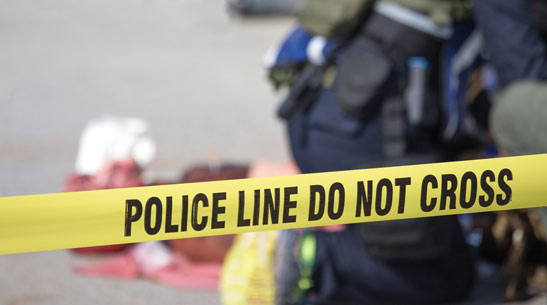What can we do? This is a question many have when it comes to active shooter and workplace violence situations. For some, it can be a complicated topic to navigate because it affects so many areas of our lives – personally, politically, and corporately. For others, the reality of a potentially violent event can be a difficult subject to even contemplate. At TriCorps, we thrive on adding value to others. Discussing, instructing, and informing others about topics such as active shooter allows us to provide mental tools for your mental tool box. Currently, our team is comprised of many who have dedicated their entire adult lives to serving their country and communities through military and law enforcement service. As a matter of fact, at our management level, our years of service collectively is over 120 years.
Reflecting on recent incidents like Parkland, Florida where 17 students and teachers were killed, and 17 others were wounded or in Sutherland Springs, Texas where 26 church members were killed, and 20 others were wounded, can be difficult. However, when the Federal Bureau of Investigation statistics reveal 250 Active Shooter incidents since the year 2000 and over 1,400 people were either killed or wounded, we must take notice. How can we respond? Nobody can stop all incidents, but we can be informed and prepared.
When we teach active shooter training, we use terminology that is standard across the country – Run, Hide, Fight. Simply put, in an active shooter situation one must react quickly. Each per-son should be familiar with their surroundings and avenues of escape. The first and best response is to Run. Remove yourself from the situation as quickly as possible, and when safe, call 911.
If running is not an option, the next best response would be to Hide. A better way to explain it is to “shelter in place.” Find a room or closet, lock the door and barricade the door with furniture and/or appliances and remain quiet while silencing your mobile devices. Military and law enforcement train on cover and concealment. Cover is defined as anything that will conceal you from others view and provide you with protection from gunfire. Concealment only keeps you hidden from the view of others; however, provides little to no protection. In all incidents cover is best, but as a last resort, total concealment could save your life.
If running or hiding is not possible, one may have to defend themselves in order to survive. This would be the time to Fight. If you must fight, you must determine that you will do what it takes to win. Use improvised weapons such as tools, chairs, heavy objects, even fire extinguishers. Use your imagination. Be swift. Do all you can to totally incapacitate the shooter(s). Also note that there is strength in numbers. If you are trapped with others, convincing them to assist in attacking the shooter with you will increase the odds of survival. Additionally, the element of surprise is your best weapon. Hide behind a door or doorway for example and attack the shooter from a close distance to increase your chances of survival.
Thinking about response to an active shooter incident is a stark reality to the time in which we live. In all situations, our best chance for survival is preparation and prevention. So how do we prepare for an active shooter incident? We suggest creating an Emergency Action Plan, conducting exercises, and providing training. How can we prevent Active Shooter incidents? We believe we must begin to recognize the indicators of potential workplace violence in others.
As high as 63% of active shooter incidents occurred at places of commerce (where we work) or in places of education. Many previous active shooters had a direct connection to the location they chose to attack. Anytime we see a significant change in the behavior of others, outbursts of anger, increased drug and alcohol abuse, homicidal/suicidal threats, a fascination with weapons, and talk of violence (especially on social media), we must inform authorities. It is important that we trust our intuition and “If we see something, we say something.”
So, What Can We Do? We can work together to provide a safe and secure environment for those we are responsible for. Having tools like – Run, Hide, Fight – are just that: tools. Coaching, training, and developing others is a good way to create a great culture. At TriCorps, we strive to do our part daily, having a great culture doesn’t just happen, it’s intentional.
Paul J. Christian
Oklahoma State Director

